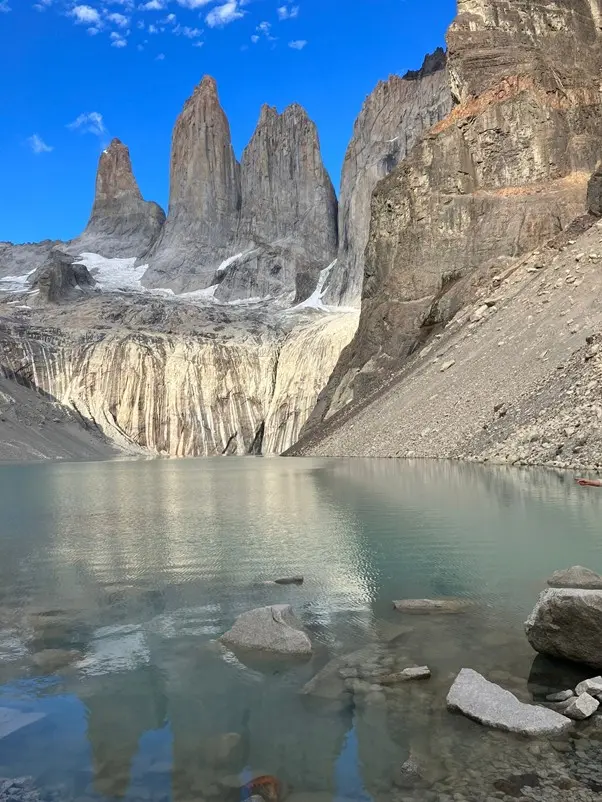Hiking the Torres del Paine O Circuit in Patagonia is one of the most unforgettable trekking adventures in the world. Over eight challenging yet rewarding days, this trail takes you through dramatic mountain passes, ancient forests, massive glaciers, and the iconic granite towers of Torres del Paine National Park. In this day-by-day trip report, you’ll find detailed insights, practical tips, and personal experiences from the full O Circuit. If you are more interested in the planning for the O Circuit at Torres Del Paine, please read our post here. Hope you enjoy the read.
Day 1 – Entrance → Campamento Serón (~13 km, 3-4 hrs)
The trek began gently, with rolling hills and wide-open meadows. We were full of energy on the first day and finished the hike in just 3 hours and 15 minutes — faster than expected, probably fueled by excitement for the adventure ahead.
When we reached Camp Serón, we found that most of the shady tent spots were already taken — a small lesson in arriving early. Shade is precious here, as the sun can be strong.
The camp itself was simple but welcoming. There was even a small kiosk where we treated ourselves to a burger and a cold beer — a surprisingly good way to celebrate our first night in the wilderness.
We were looking forward to seeing the stars at night, but it didn’t get truly dark until around 10:30 p.m. We wanted to sleep early to start our hike early the next morning — a challenge that, unfortunately, repeated itself every day.
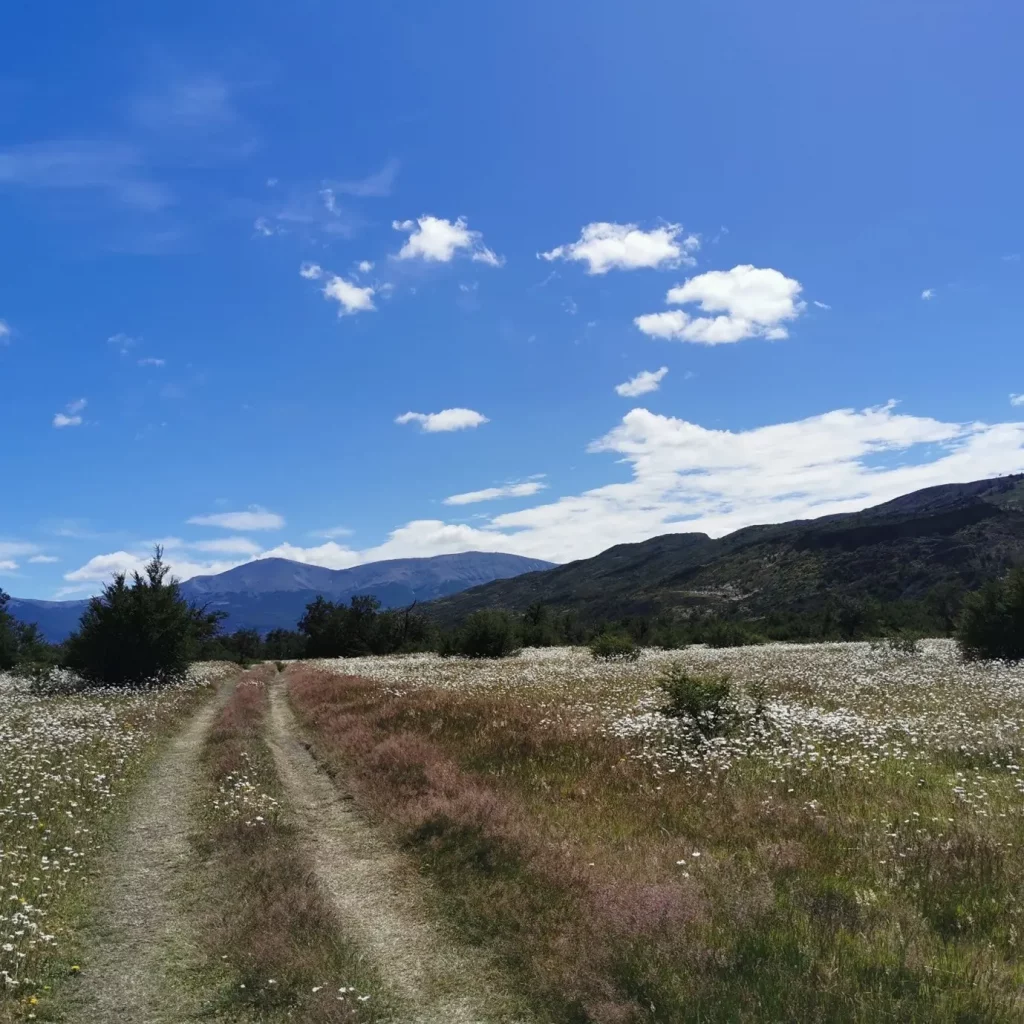
Day 2 – Serón → Refugio Dickson (~19 km, 5–7 hrs)
The trail wound its way along a wide river, peaceful and shimmering in the sun. After a while, we reached a section with a wooden boardwalk laid over soggy ground, likely built to protect the fragile grass and small lagoons underneath.
From there, the trail narrowed dramatically into a very thin path, just wide enough for one person. On the right, the valley dropped steeply, while on the left, the mountain rose sharply. Although it was a little nerve-wracking, the stunning views made every careful step worthwhile.
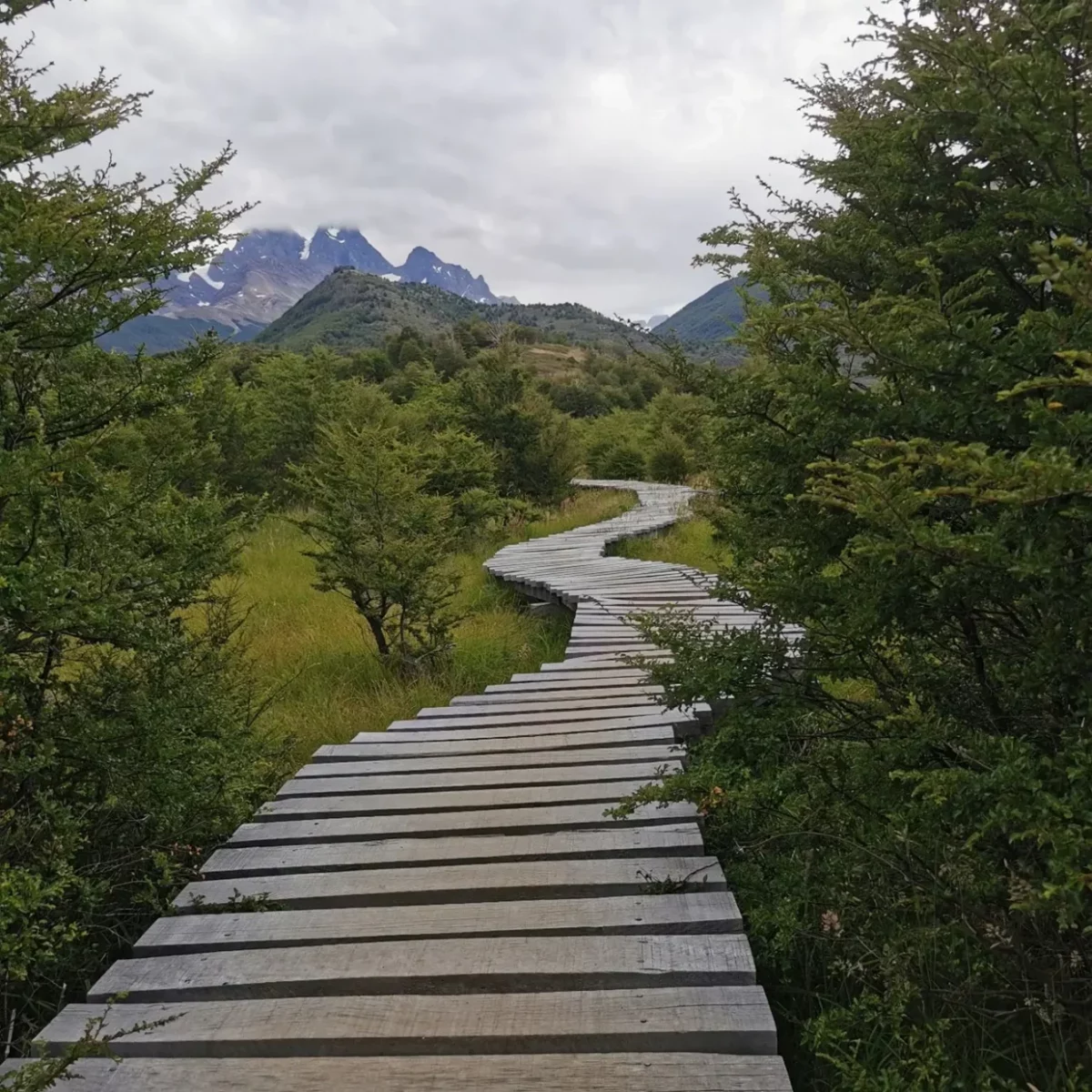
Day 3 – Dickson → Campamento Los Perros (~11–13 km, 4–5 hrs)
Day three started with a steep uphill hike that led us to an incredible viewpoint overlooking the Grey Glacier. The scene was breathtaking. However, the wind hit us quickly. Ice particles flew through the air, stinging our faces and making it impossible to enjoy the view for more than a few minutes.
Afterwards, the trail leveled out for a while and then dipped slightly downhill as we continued toward Campamento Los Perros. The campsite, tucked between trees, offered a welcome refuge and was well protected from both wind and rain.
Finally, as evening approached, we were already thinking ahead. Knowing the upcoming hike would be a serious challenge made the camp feel a little tense, even though we tried to relax.
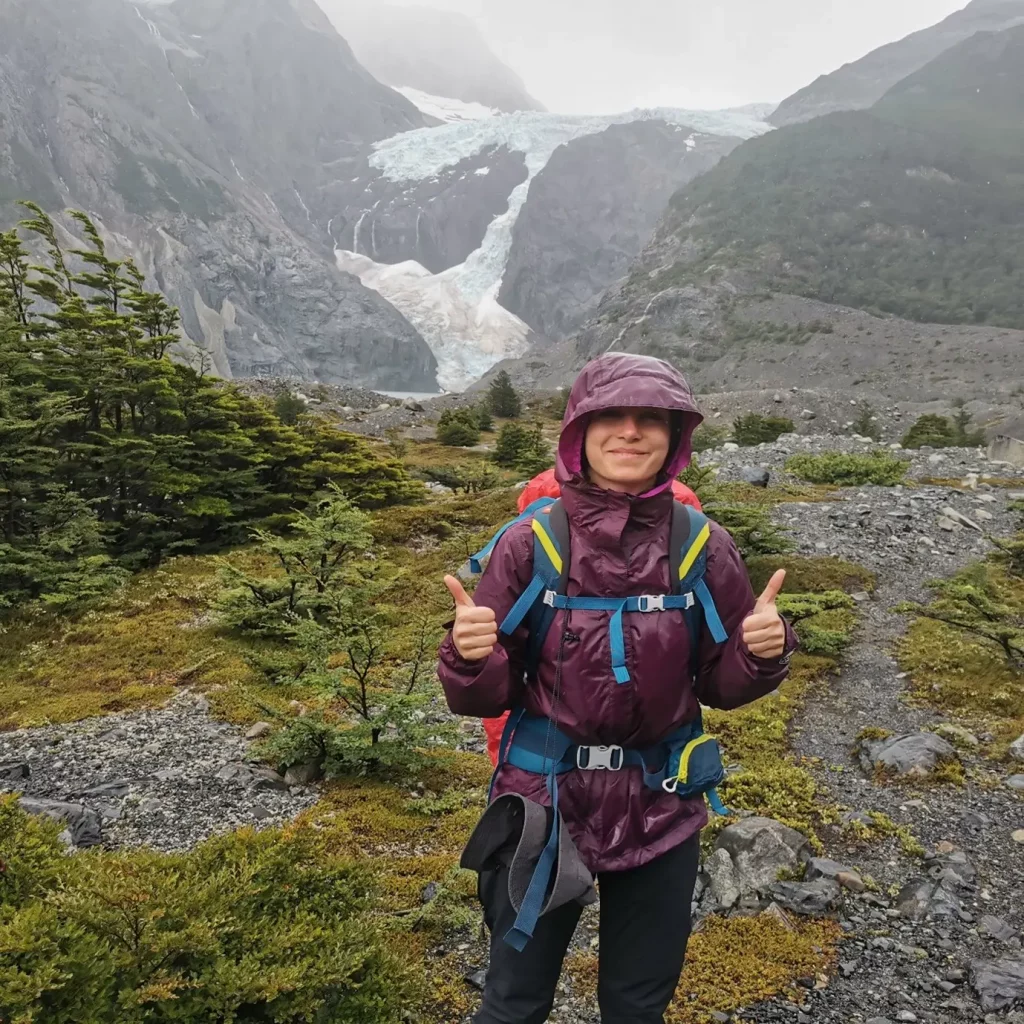
Day 4 – Los Perros → Paso John Gardner → Refugio Grey/Paine Grande (~17–24 km, 8–11 hrs)
We woke up at 5:30 a.m. The latest check-out from camp was 7:00 a.m. — no joke! The camp workers were strict, and they practically kicked us out to start the hike to the next camp.
At first, the day began with a short 5-minute stroll through the forest. It was a gentle warm-up before the real climb began. Soon after, the trail grew steep and we pushed our way uphill through the trees. Eventually, the forest thinned out and we found ourselves in an exposed, treeless zone. Our path was covered in loose stones, and for nearly two hours we climbed steadily on the slippery, rocky trail.
Reaching the top was worth every step. Grey Glacier stretched endlessly before us, a vast sheet of ice fading into the clouds. The view felt both infinite and otherworldly.
The descent turned out to be just as demanding. First came a steep downhill over barren, windswept slopes. Then the path led us back into the forest. At one point, we scrambled up a rocky section, and later we crossed two narrow bridges. The scenery along the way was breathtaking — glacier views, rugged cliffs, and wide valleys opening below us.
By late afternoon, we finally reached Camp Grey, the largest campsite so far. It offered warm showers, a welcoming restaurant, and even some couches — a rare luxury on this trek
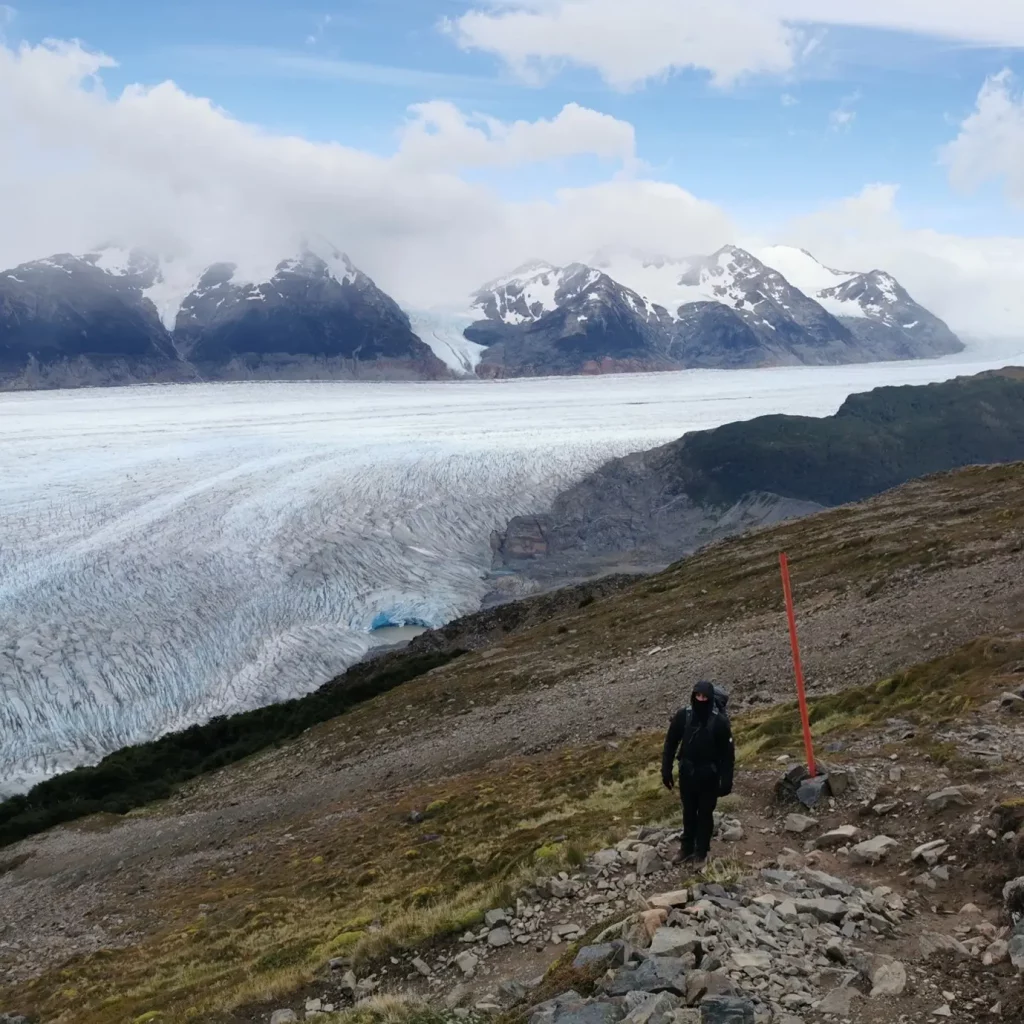
Day 5 – Refugio Grey → Paine Grande (~11 km, 2.5–3.5 hrs)
After the long and exhausting climb over the John Gardner Pass, we treated ourselves to a slower morning. We slept in until 7:00 a.m. and only hit the trail around 8:00. The hike was an easy day — a gentle walk with no major climbs — and it took us just 2 hours and 30 minutes to reach Camp Paine Grande.
Lunch, however, was less exciting. For the fourth day in a row, we opened our lunch box to find the same sandwich. To this day, we’re not sure if it was chicken or tuna in some kind of orange-colored sauce. It had been tasty the first two days, but by now the sight of it was… well, not so thrilling anymore.
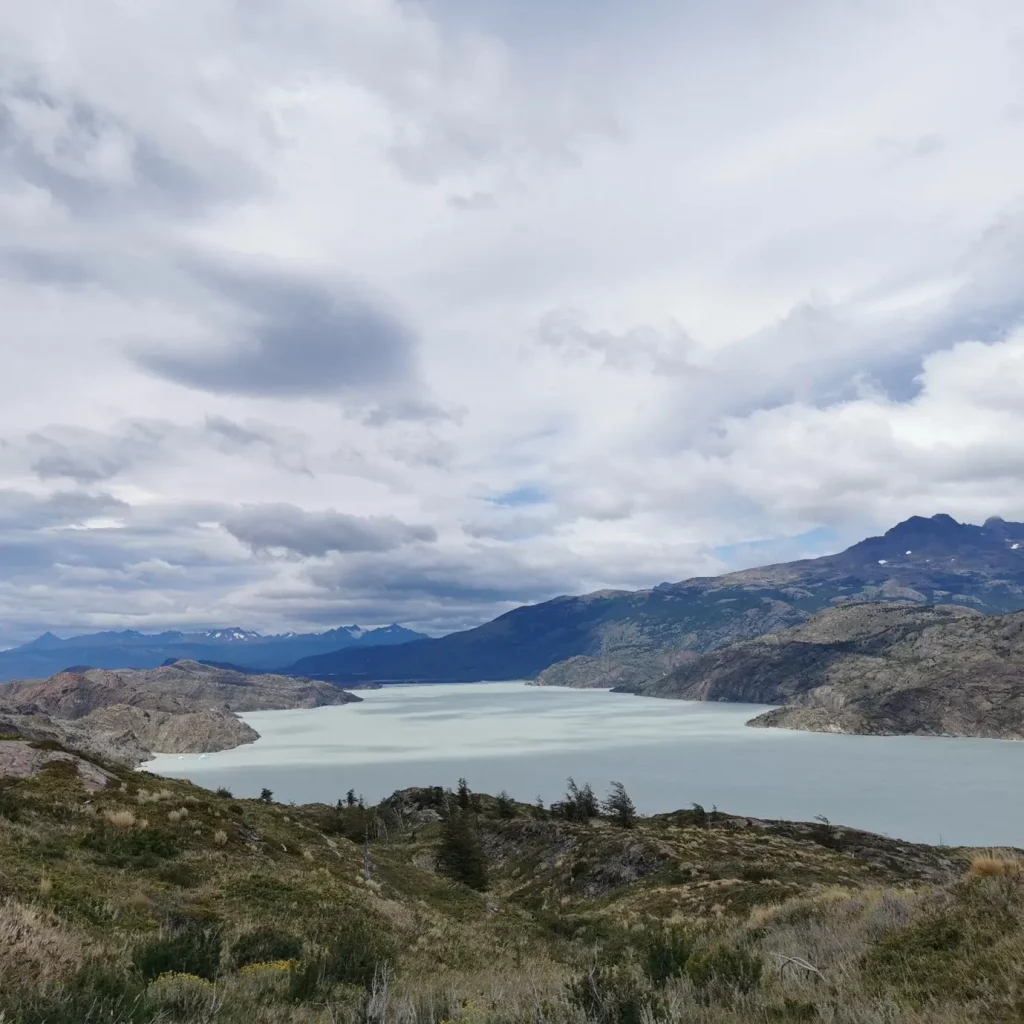
Day 6 – Paine Grande → Campamento Francés (~7.5 km, 2–3 hrs)
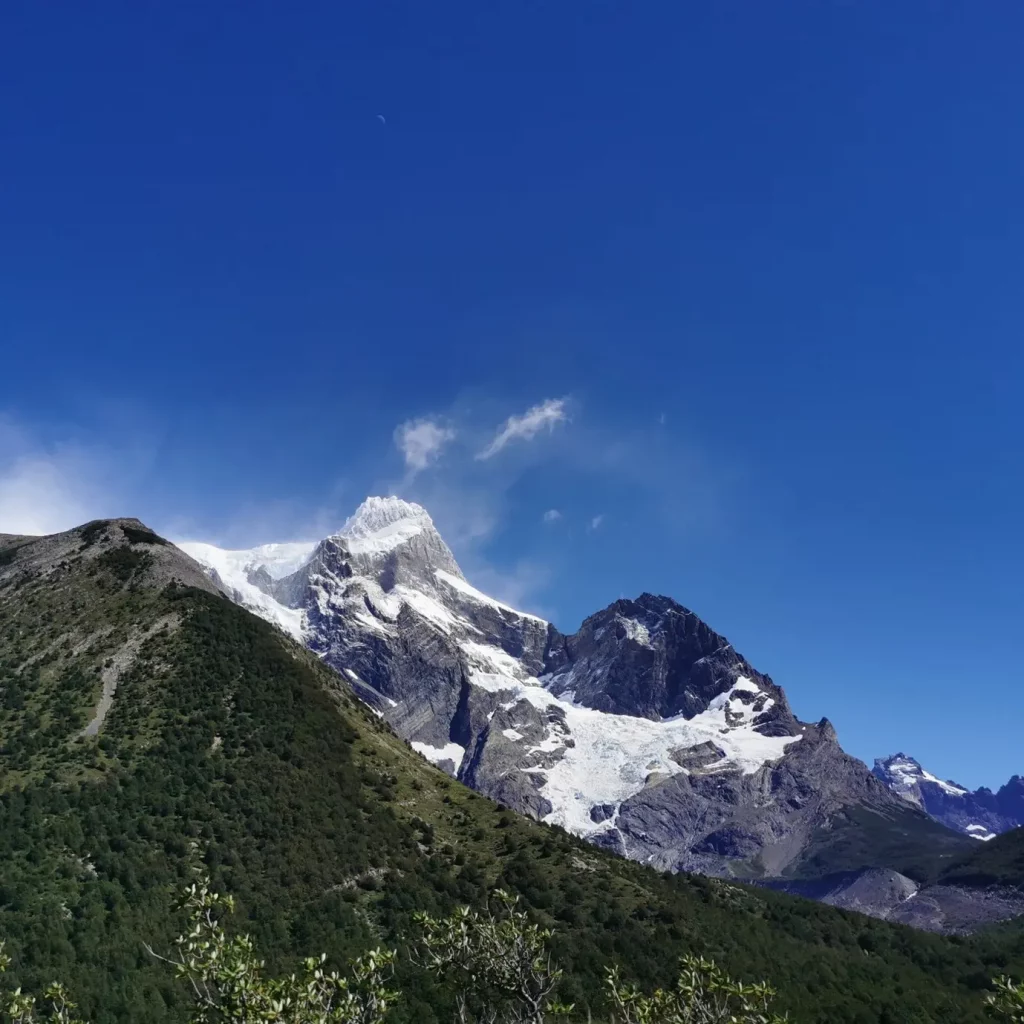
Today’s hike was short in distance but wild in experience. We faced the craziest wind yet — at one exposed crossing, with no trees on either side and a vast lake stretching out to the left, the gusts were so strong that we had to lie flat on the ground for a full minute before daring to get back up and run for cover between the trees. Patagonia’s winds are no joke.
Along this section, trekkers can choose between staying at Refugio Italiano or Campamento Francés (this choice must be made at the time of booking). We had booked Francés, which turned out to be a good decision despite its quirks.
There’s also the option to hike up to the Mirador Británico, a spectacular viewpoint in the French Valley. Unfortunately, we missed it this time.
Campamento Francés is built on a hillside, which means plenty of up-and-down walking within the camp itself. The restaurant is located in the valley, and while they offered a few simple sandwiches, anyone craving a proper hot meal needed to have reserved it well in advance — no walk-in orders accepted.
Day 7 – Campamento Francés → Central (~15 km, 5–6 hrs)
We started our hike from Francés and, after about an hour, reached Camp Los Cuernos. We took a short break there to refill our water bottles and have a quick look around. The common area looked really cozy, a place where it would have been nice to linger — but we still had ground to cover.
From there, we continued along the trail until we finally reached Camp Central. This was by far one of the most crowded camps of the trek, much larger and busier than the ones we had gotten used to. Despite the noise and activity, we decided to settle in for the evening, rest up, and prepare for our final hike the next morning.
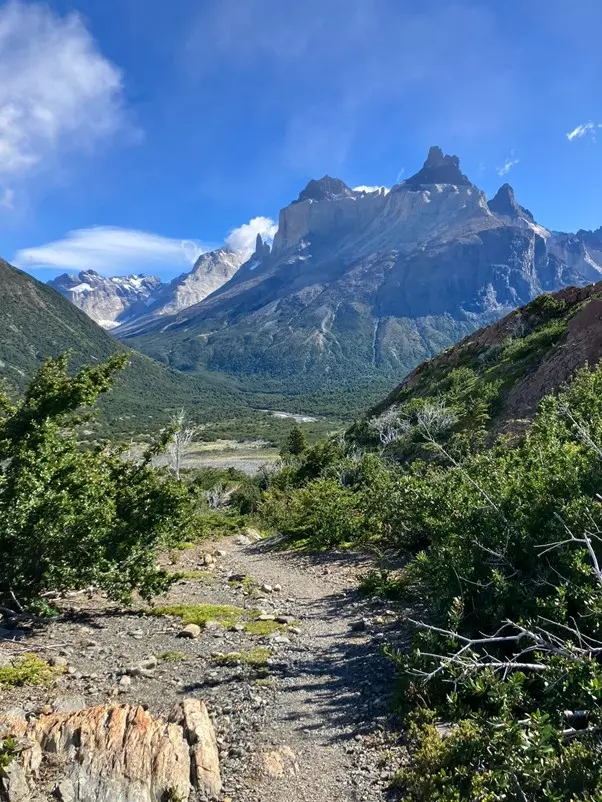
Day 8 – Central → Torres del Paine Lookout → Exit (~18 km round trip, 7–8 hrs)
We had heard the weather would be warm and sunny, so the final hike to the Torres viewpoint was best done early. That morning, we woke up at 4:50 a.m. and were on the trail by 5:15, leaving our tent at Central behind.
The climb itself was magical. As we gained height, the sunrise lit up the valley, painting the mountains in golden colors. Along the way, we passed Camp Chileno and paused briefly to refill our water bottles. We felt energetic and motivated, and the ascent took us around 3 hours and 30 minutes, including a long break.
The last kilometers were the hardest. The rocky path became steeper and the climb felt demanding. Yet the reward was immense. At last, we reached the turquoise lagoon beneath the Torres, with the granite towers soaring straight into the sky. A few other hikers were already there, and it felt wonderful to share the view while enjoying some snacks and drinks.
On the way down, the sun grew stronger and the heat began to rise. We were very glad to have started early. Back at Camp Central, we took a quick shower, packed our bags, and caught the shuttle bus to the park entrance. From there it was a 1.5-hour bus ride to Puerto Natales, followed by another 3 hours to Punta Arenas — tired but happy, carrying home unforgettable memories of completing the full O Circuit.
